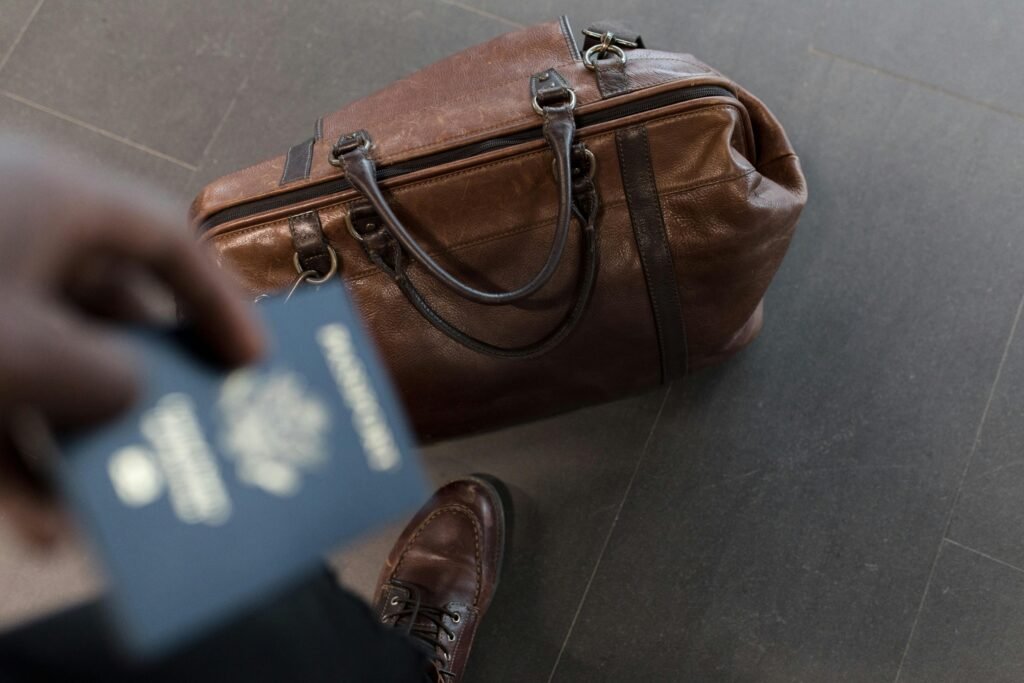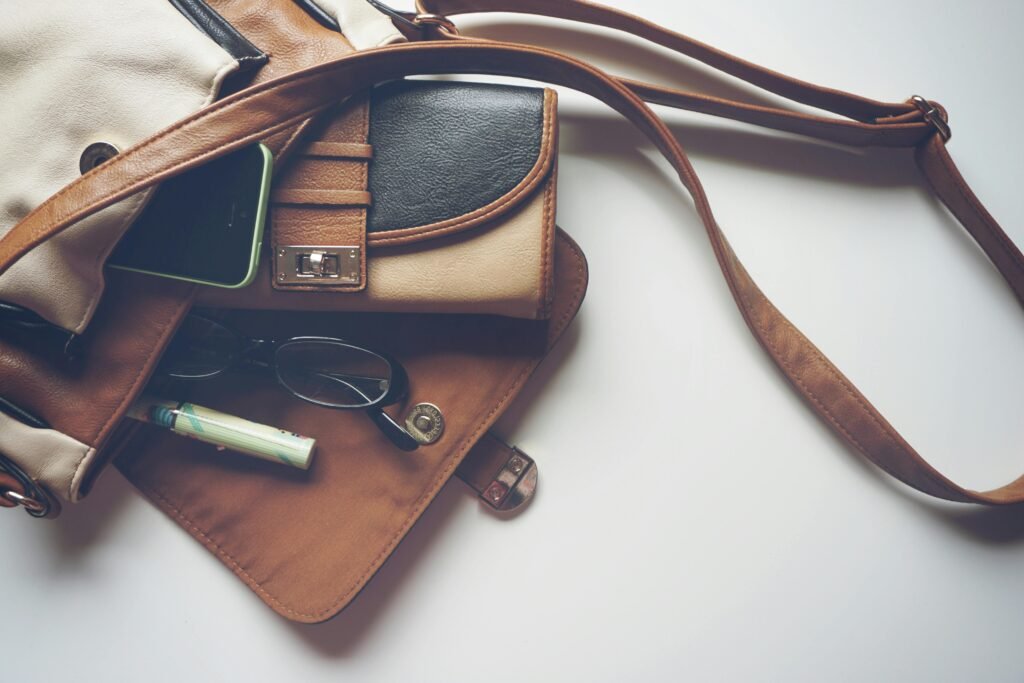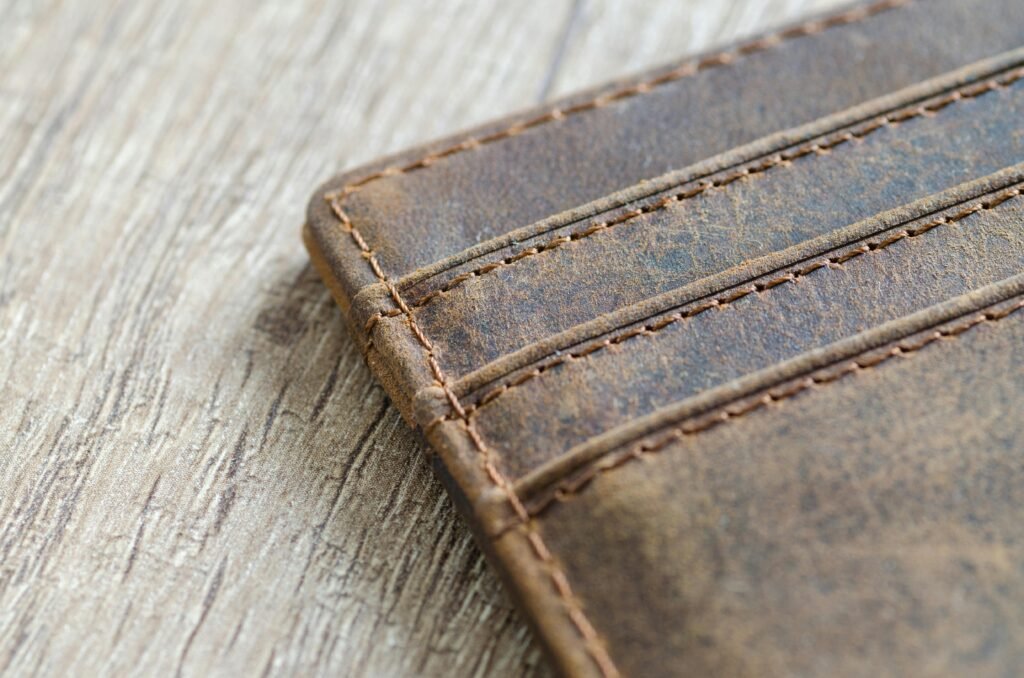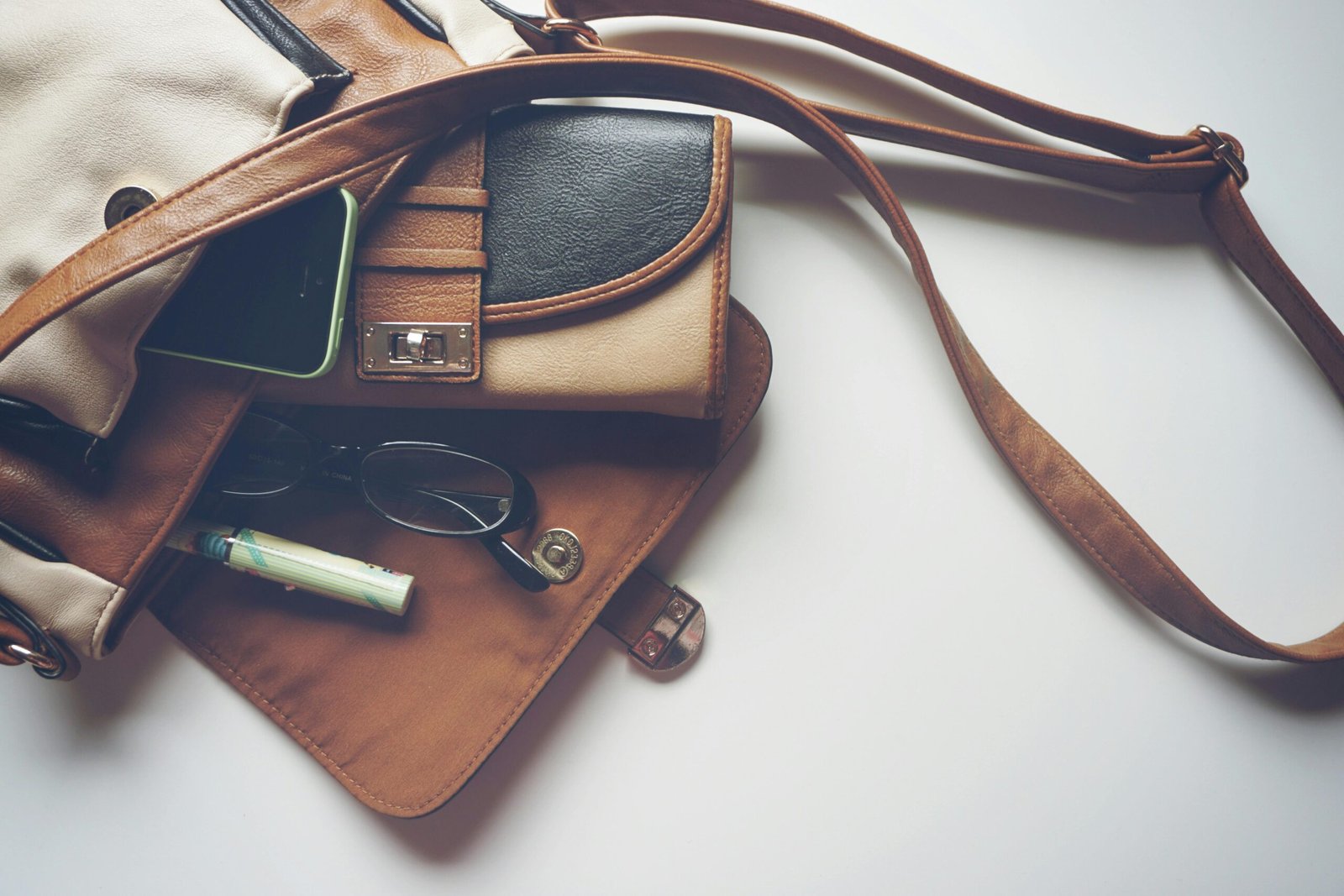Maintaining the longevity and pristine condition of your high-quality wallet doesn’t have to be an arduous task. In this step-by-step guide, you will discover the essential care techniques that will keep your wallet looking stylish and functional for years to come. From simple cleaning tips to effective storage methods, this article will provide you with the knowledge and confidence to ensure your wallet stands the test of time. So, grab your wallet and get ready to learn the secrets to proper wallet care!

This image is property of images.pexels.com.
Cleaning
Cleaning your high-quality wallet is an essential part of maintaining its appearance and longevity. By regularly removing dirt and debris, using specialized cleaning products, and avoiding excessive moisture, your wallet will stay in top condition for years to come.
Removing dirt and debris
Start by removing any dirt or debris from your wallet. Gently brush the surface with a soft-bristled brush or use a lint roller to pick up loose particles. Be sure to pay attention to the corners and crevices where dirt can accumulate. For stubborn stains, you can use a mild soap solution and a soft cloth to gently wipe the surface. Avoid scrubbing vigorously as it may damage the leather.
Using specialized cleaning products
When it comes to cleaning your high-quality wallet, it’s essential to use products specifically designed for leather. Avoid using harsh chemicals or household cleaners, as they can strip away the natural oils and damage the leather. Instead, opt for a leather cleaner that is gentle and safe for use on your wallet. Follow the instructions on the product label and test it on a small, inconspicuous area before applying it to the entire wallet.
Avoiding excessive moisture
Excessive moisture can be detrimental to the quality of your wallet. Leather is susceptible to water damage and can become discolored or warped when exposed to excessive moisture. To prevent this, avoid using wet cloths or submerging your wallet in water. If your wallet does get wet, gently pat it dry with a soft cloth and let it air dry naturally. Avoid using heat sources such as hairdryers, as they can cause the leather to crack or shrink.
Storage
Proper storage is crucial in maintaining the condition of your high-quality wallet. By choosing the right storage space, keeping it away from direct sunlight, and using dust bags or covers, you can ensure that your wallet stays protected and in pristine condition.
Choosing the right storage space
When storing your wallet, it’s important to choose a suitable location. Opt for a cool, dry place that is away from direct sunlight and extreme temperature changes. Avoid storing it in a cramped space or where it may be exposed to sharp objects or heavy items that can cause damage. Consider investing in a dedicated storage box or drawer to keep your wallet organized and protected.
Keeping wallets away from direct sunlight
Direct sunlight can cause your wallet’s leather to fade and dry out over time. To prevent this, store your wallet in a shaded area or use a protective cover to shield it from sunlight. Additionally, avoid leaving your wallet in a hot car, as extreme temperatures can also damage the leather and any delicate hardware or accents.
Using dust bags or covers
To further safeguard your wallet, consider using a dust bag or cover when it’s not in use. These protective covers help prevent dust, dirt, and scratches from accumulating on the surface of your wallet. When placing your wallet in a dust bag or cover, ensure that it is clean and dry to prevent any moisture or debris from being trapped inside.

This image is property of images.pexels.com.
Regular Maintenance
Regular maintenance is essential for keeping your wallet looking its best. By conditioning the leather, polishing metal accents, and inspecting for wear and tear, you can prolong the lifespan of your high-quality wallet.
Conditioning the leather
Leather is a natural material that requires regular conditioning to keep it supple and prevent it from drying out. Apply a small amount of leather conditioner onto a soft, lint-free cloth and gently rub it into the surface of your wallet. This process helps replenish the natural oils in the leather, keeping it moisturized and preventing cracks or stiffness. Follow the product instructions and avoid over-conditioning, as it can lead to a greasy appearance.
Polishing metal accents
If your wallet has metal accents, such as zippers or buckles, it’s important to give them some attention as well. Use a metal polish specifically designed for the type of metal used in your wallet’s accents. Apply a small drop of polish onto a cloth and gently rub it onto the metal surfaces. This process helps remove any tarnish or fingerprints, keeping your wallet’s hardware looking shiny and new.
Inspecting for wear and tear
Regularly inspect your wallet for any signs of wear and tear. Check for loose stitches, frayed edges, or worn-out leather. If you notice any issues, address them promptly to prevent further damage. Consider taking your wallet to a professional leather repair service for more complex repairs, or use a leather repair kit for minor scratches or scuffs. Taking the time to inspect your wallet and address any issues will help maintain its overall quality and appearance.
Protective Measures
To ensure the longevity of your high-quality wallet, there are several protective measures you can take. By applying leather protectant, avoiding contact with sharp objects, and using a wallet insert for organization, you can keep your wallet in excellent condition.
Applying leather protectant
Leather protectant is a valuable tool for shielding your wallet from everyday wear and tear. Apply a thin, even layer of leather protectant onto a clean, dry cloth and gently rub it onto the surface of your wallet. This protective barrier helps repel water, stains, and other forms of damage. Be sure to follow the product instructions and reapply the protectant as needed.
Avoiding contact with sharp objects
To prevent scratches or tears on your wallet, be mindful of what you place near it. Avoid placing your wallet in bags or pockets with sharp objects, such as keys or pens. Additionally, store your wallet separately from any accessories or items that have the potential to scratch or damage the leather.
Using a wallet insert for organization
A wallet insert not only helps you stay organized but also protects your wallet’s interior. These inserts provide additional compartments for cards, coins, and other small items, preventing them from scratching or damaging the leather. Utilizing a wallet insert can help minimize stress on your wallet’s structure and prolong its lifespan.

This image is property of images.pexels.com.
Handling and Usage
How you handle and use your wallet plays a significant role in its longevity. By avoiding overstuffing the wallet, being gentle while opening and closing it, and keeping coins separate to avoid scratches, you can prevent unnecessary wear and tear.
Avoiding overstuffing the wallet
Overstuffing your wallet puts unnecessary strain on the leather and can cause it to lose its shape over time. It’s essential to only carry the essentials and periodically declutter your wallet. Remove any cards, receipts, or items that you no longer need, and ensure that your wallet remains slim and compact. This practice not only protects the wallet but also makes it more comfortable to carry.
Being gentle while opening and closing
When opening and closing your wallet, take care to avoid pulling or yanking on the material. Gently glide your fingers across the openings and use a delicate touch to prevent stretching or damaging the leather. Being mindful of how you handle your wallet will help preserve its structure and prevent unnecessary strain on the seams and edges.
Keeping coins separate to avoid scratches
Coins can be particularly abrasive and can cause scratches or scuffs on your wallet’s leather. To protect your wallet, consider keeping coins in a separate coin purse or designated compartment. If your wallet doesn’t have a dedicated space for coins, use a small cloth or pouch to hold them. This separation will minimize the risk of scratches and maintain the pristine appearance of your wallet.
Repair and Restoration
Over time, your high-quality wallet may require repair or restoration to address any damages. For major damages, it’s best to seek professional help, while minor scratches can often be resolved using leather repair kits. Additionally, preserving the original hardware is crucial to maintaining the authenticity and value of your wallet.
Seeking professional help for major damages
If your wallet has significant damage, such as torn leather or broken hardware, it’s advisable to seek professional help. A skilled leather repair specialist will have the expertise and tools to address complex issues and restore your wallet to its original condition. They can repair stitching, replace damaged hardware, or even patch and recondition the leather if necessary.
Using leather repair kits for minor scratches
Minor scratches or scuffs on your wallet can often be remedied using a leather repair kit. These kits typically include a variety of tools and materials to help you repair surface-level damages. Follow the instructions on the kit carefully and test any products on an inconspicuous area before applying them to the entire wallet.
Preserving original hardware
If your wallet has unique or valuable hardware, such as a branded logo or buckle, it’s important to preserve its original condition. Avoid using abrasive materials or harsh chemicals when cleaning or polishing the hardware, as they can cause damage or discoloration. Instead, use a soft cloth and gentle cleaning products specifically designed for the type of metal or material used in your wallet’s hardware.
Preventing Color Fading
To prevent color fading and keep your wallet looking vibrant, it’s essential to take certain precautions. By keeping your wallet away from heat sources, using color-protecting products, and rotating its usage, you can maintain its original color and prevent uneven fading.
Keeping wallets away from heat sources
Heat sources, such as direct sunlight, radiators, or hot surfaces, can cause color fading in your wallet’s leather. To prevent this, avoid placing your wallet near these sources and store it in a cool, shaded area. When traveling, keep your wallet away from items that generate heat, such as laptops or heating pads.
Using color-protecting products
Color-protecting products, such as leather conditioners or sprays, can help safeguard your wallet’s color from fading. These products often contain UV filters that help block harmful sun rays. Before applying any color-protecting product, make sure your wallet is clean and dry. Follow the instructions provided with the product and test it on a small, inconspicuous area before applying it to the entire wallet.
Rotating usage to prevent uneven fading
By using your wallet regularly and rotating its usage, you can prevent uneven fading. Continuous exposure to sunlight or prolonged use can cause specific areas of your wallet to fade faster than others. By alternating between multiple wallets, you distribute the wear and fading more evenly, preserving the vibrant color of each wallet for longer.
Dealing with Stains
Stains can be a common occurrence on wallets, but with the right techniques, they can often be treated effectively. Whether you’re dealing with ink and oil stains or dirt stains, taking a gentle approach and testing cleaning solutions in inconspicuous areas is vital.
Treating ink and oil stains
Ink and oil stains can be challenging to remove from your wallet. If you discover an ink stain, act quickly by dabbing the affected area with a clean cloth or paper towel to absorb as much ink as possible. Avoid rubbing or spreading the stain further. For oil stains, gently blot the area with a clean, dry cloth to absorb the oil. Avoid using water or wet substances, as they can spread the stain. If the stains persist, consider consulting a professional leather cleaner for assistance.
Using gentle methods for removing dirt stains
Dirt stains are a common occurrence on wallets, especially lighter-colored ones. To remove dirt stains, start by gently brushing the surface with a soft-bristled brush or using a lint roller to lift any loose particles. If the stain remains, use a mild soap solution and a soft cloth to gently dab the area. Avoid scrubbing vigorously, as this can damage the leather. After cleaning, be sure to let the wallet air dry naturally and away from direct heat sources.
Testing cleaning solutions on inconspicuous areas
Before using any cleaning solutions or techniques on your wallet, it’s crucial to test them on inconspicuous areas. Apply a small amount of the cleaning solution on an unseen part of the wallet, such as the interior or an inside flap, and observe for any adverse reactions. If there are no changes or damages, proceed with caution when using the cleaning solution on the rest of the wallet.
Avoiding Temperature Extremes
Extreme temperatures can have detrimental effects on your wallet’s leather and overall condition. By protecting your wallet from extreme cold or heat, avoiding storage in a hot car, and allowing it to gradually adapt to temperature changes, you can mitigate the risks associated with temperature extremes.
Protecting wallets from extreme cold or heat
Extreme cold or heat can cause significant damage to your wallet’s leather. Exposure to extreme cold can result in the leather becoming brittle and prone to cracking, while exposure to extreme heat can cause the leather to dry out and lose its natural oils. To protect your wallet, avoid leaving it in areas with extreme temperature fluctuations, such as near heaters or air conditioning vents.
Avoiding storing wallets in a car during hot days
Leaving your wallet in a car during hot summer days is a recipe for disaster. The heat inside a car can quickly reach extreme temperatures, potentially causing irreparable damage to your wallet. When parking your car, take your wallet with you or store it in a cool, shaded area within the vehicle. If you’re concerned about the heat, consider using a small insulated bag to keep your wallet protected.
Allowing wallets to gradually adapt to temperature changes
If you’re moving your wallet from an area with extreme temperatures to a more moderate environment, it’s essential to allow it to gradually adapt. Sudden temperature changes can cause the leather to expand or contract rapidly, leading to warping or cracking. Give your wallet time to adjust to the new temperature by placing it in a neutral area, away from direct heat or cold sources, for a few hours before regular use.
Caring for Specific Materials
Different wallet materials require specific care techniques to maintain their quality and appearance. Whether you have a genuine leather wallet, a vegan or synthetic leather wallet, or an exotic leather wallet, there are tailored care tips you should follow.
Caring for genuine leather wallets
Genuine leather wallets require regular conditioning to keep them supple and prevent drying. Follow the steps outlined earlier in this guide to condition your leather wallet and keep it looking its best. Additionally, be cautious of water exposure, as excessive moisture can damage the leather. If your genuine leather wallet does get wet, pat it dry gently with a soft cloth and allow it to air dry naturally.
Maintaining vegan or synthetic leather wallets
Vegan or synthetic leather wallets offer a cruelty-free alternative to genuine leather. To care for these wallets, wipe them clean with a damp cloth regularly. Avoid using harsh chemicals or abrasive materials that can damage the synthetic material. If needed, you can also use a mild soap solution and a soft cloth to remove stubborn stains. However, always test the cleaning solution on a small, inconspicuous area first to ensure it doesn’t cause any discoloration or damage.
Special care tips for exotic leather wallets
Exotic leather wallets, such as those made from snakeskin or ostrich leather, require extra care due to their unique textures and characteristics. They are more susceptible to scratches and should be handled gently. Avoid using any cleaning solutions or abrasive materials that can damage the delicate scales or patterns of the exotic leather. Instead, use a soft, dry cloth to wipe away any dust or dirt gently. For specific care instructions, refer to the manufacturer’s guidelines or consult a professional exotic leather cleaner.
By following these comprehensive care techniques, you can ensure that your high-quality wallet remains in excellent condition for years to come. Remember to clean your wallet regularly, store it properly, perform regular maintenance, take protective measures, handle and use it with care, address any repairs or restoration promptly, prevent color fading, deal with stains cautiously, avoid temperature extremes, and apply tailored care techniques for specific materials. With proper care and attention, your high-quality wallet will continue to be a functional and stylish accessory, ready to accompany you on all your adventures.
